The Catalyst Killing - [22]
The library – where the now twenty-year-old Patricia Louise I. E. Borchmann had spent most of her waking hours since a car accident had killed her mother and left her paralysed from the waist down – was still the same, too. And there she was, surrounded by all her books, sitting back in her wheelchair, apparently relaxed, with a thick notebook and three ballpoint pens at the ready on the large table.
The new decade had heralded few changes in here. The twenty-year-old Patricia I met in summer 1970 looked more or less the same as the nineteen-year-old Patricia I had fled from in spring 1969. I was convinced that she remembered my hasty retreat, but she did nothing to show it if that was the case. The starter to a delicious three-course meal was already on the table.
It did not feel natural for me to shake her hand, or to initiate any form of physical contact, and fortunately she did not appear to feel inclined either. But it did feel absolutely natural that I should come back here to seek her advice, now that I was once again in the middle of a demanding investigation. It had become part of the world order that we both took for granted; I needed her help to solve my murders, and she needed my help to give her life meaning. So we sat down without shaking hands and this time without any small talk either.
‘Tell me everything,’ she said, the very second that the door closed behind the maid.
Patricia noted down the odd key word as a reminder, but otherwise listened in silence while we consumed the oxtail soup and most of the duck breast. I myself had my work cut out trying to finish both the starter and the first course and still deliver my report of the day’s hearings fast enough to prevent any impatient furrows appearing on Patricia’s brow. It was half past eight by the time I had gone through all the day’s events and reached the end of my visit to the victim’s father.
‘So, what does the genius have to say about Falko Reinhardt’s disappearance and Marie Morgenstierne’s murder so far?’ I asked, before throwing myself with gusto into what remained of my first course.
Patricia smiled.
‘The genius is certainly intelligent enough to see that we still lack too much information to be able to conclude anything about these two rather complicated cases. And at the same time warns that it may take time and energy to solve them. The universes we have dealt with in both our previous cases have been clearly defined, and we have had to separate the truth from lies, and the murderer from the innocent within a limited group of known players. Here we face the curse of public space. Practically the whole of Oslo could in theory have shot Marie Morgenstierne at Smestad yesterday, with the exception of her father and anyone else with a clear alibi. And practically the whole world could, in one way or another, have played a part in Falko Reinhardt’s disappearance in Valdres two years ago. However, bearing in mind the dates, it seems likely that there is some kind of connection between these two events. And I think that we can safely say that the person who shot Marie Morgenstierne is someone she already knew.’
I looked at Patricia, impressed, as she slowly and thoughtfully chewed her last mouthful of duck.
‘That sounds reasonable enough. But how can you be so sure? And, what’s more, how did you know before the pathologist that she had been shot, and with an unusual weapon?’
Patricia was looking at me patronizingly already.
‘I thought it was fairly obvious that she had been shot, but the argument does entail further implications that we should bear in mind. As you yourself saw, Marie Morgenstierne was running in fear for her life, even though there was no one behind her. However, she was still cool-headed enough to skip from side to side, clearly to make herself a less easy target for the person with the gun. It had to be a gun, really, as the murderer was obviously quite far behind her. But he or she would obviously be taking quite a chance by walking around Smestad with an ordinary hunting rifle. So it is therefore reasonable to assume that it was a more unusual weapon, one that could in some way remain concealed from other passers-by. In theory it could of course be a powerful revolver or pistol, even though that would require an unusually good shot. So what sort of murder weapon it was, and what it looked like, is a mystery in itself.’
Patricia smiled smugly, finished the water in her glass, and quickly continued before I made any attempt to interrupt her.
‘The blind witness can of course not help us with that, but her statement is still very revealing. Something happened to make Marie Morgenstierne break from a steady walk into a mad dash for her life. As the blind lady, with her excellent hearing, could not hear the train, Marie Morgenstierne could presumably not see it either. So she was not running to catch the train – it just suddenly appeared in front of her, and she realized it was her only chance to save her life. We know she panicked, obviously for some justifiable reason, while she was walking happily down the road – but that does not necessarily need to be linked to any of the people walking behind her. She could have seen someone else waiting down a side road, or behind a hedge. But something happened that alerted Marie Morgenstierne to danger, and made her run. And I would dearly love to know what it was. It would seem that it was something that the others there did not understand, but she immediately knew what it meant.’
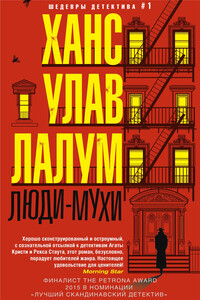
Убит бывший лидер норвежского Сопротивления и бывший член кабинета министров Харальд Олесен. Его тело обнаружено в запертой квартире, следов взлома нет, орудие убийства отсутствует. На звук выстрела к двери Олесена сбежались все соседи, но никого не увидели. Инспектор уголовного розыска Колбьёрн Кристиансен считает, что убийство, скорее всего, совершил кто-то из них. Более того, он полагает, что их показания лживы.
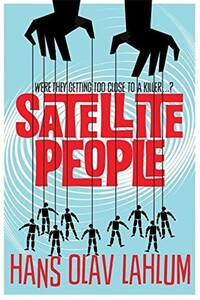
A gripping, evocative, and ingenious mystery which pays homage to Agatha Christie, Satellite People is the second Norwegian mystery in Hans Olav Lahlum's series. Oslo, 1969: When a wealthy man collapses and dies during a dinner party, Norwegian Police Inspector Kolbjorn Kristiansen, known as K2, is left shaken. For the victim, Magdalon Schelderup, a multimillionaire businessman and former resistance fighter, had contacted him only the day before, fearing for his life. It soon becomes clear that every one of Schelderup's 10 dinner guests is a suspect in the case.
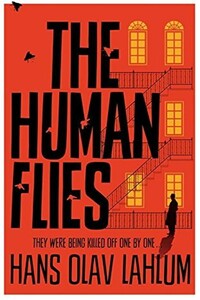
Oslo, 1968: ambitious young detective Inspector Kolbjorn Kristiansen is called to an apartment block, where a man has been found murdered. The victim, Harald Olesen, was a legendary hero of the Resistance during the Nazi occupation, and at first it is difficult to imagine who could have wanted him dead. But as Detective Inspector Kolbjorn Kristiansen (known as K2) begins to investigate, it seems clear that the murderer could only be one of Olesen's fellow tenants in the building. Soon, with the help of Patricia – a brilliant young woman confined to a wheelchair following a terrible accident – K2 will begin to untangle the web of lies surrounding Olesen's neighbors; each of whom, it seems, had their own reasons for wanting Olesen dead.
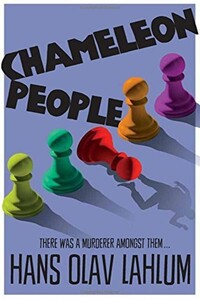
From the international bestselling author, Hans Olav Lahlum, comes Chameleon People, the fourth murder mystery in the K2 and Patricia series.1972. On a cold March morning the weekend peace is broken when a frantic young cyclist rings on Inspector Kolbjorn 'K2' Kristiansen's doorbell, desperate to speak to the detective.Compelled to help, K2 lets the boy inside, only to discover that he is being pursued by K2's colleagues in the Oslo police. A bloody knife is quickly found in the young man's pocket: a knife that matches the stab wounds of a politician murdered just a few streets away.The evidence seems clear-cut, and the arrest couldn't be easier.
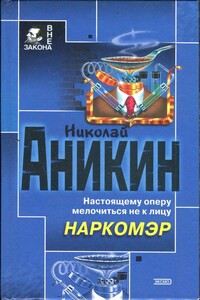
Тупик. Стена. Старый кирпич, обрывки паутины. А присмотреться — вроде следы вокруг. Может, отхожее место здесь, в глухом углу? Так нет, все чисто. Кто же сюда наведывается и зачем? И что охраняет тут охрана? Да вот эту стену и охраняет. Она, как выяснилось, с секретом: время от времени отъезжает в сторону. За ней цех. А в цеху производят под видом лекарства дурь. Полковник Кожемякин все это выведал. Но надо проникнуть внутрь и схватить за руку отравителей, наживающихся на здоровье собственного народа. А это будет потруднее…

«Посмотреть в послезавтра» – остросюжетный роман-триллер Надежды Молчадской, главная изюминка которого – атмосфера таинственности и нарастающая интрига.Девушка по имени Венера впадает в кому при загадочных обстоятельствах. Спецслужбы переправляют ее из закрытого городка Нигдельск в Москву в спецклинику, где известный ученый пытается понять, что явилось причиной ее состояния. Его исследования приводят к неожиданным результатам: он обнаруживает, что их связывает тайна из его прошлого.
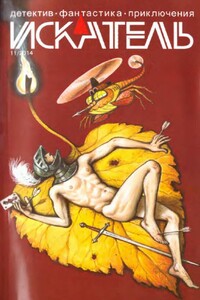
«ИСКАТЕЛЬ» — советский и российский литературный альманах. Издаётся с 1961 года. Публикует фантастические, приключенческие, детективные, военно-патриотические произведения, научно-популярные очерки и статьи. В 1961–1996 годах — литературное приложение к журналу «Вокруг света», с 1996 года — независимое издание.В 1961–1996 годах выходил шесть раз в год, в 1997–2002 годах — ежемесячно; с 2003 года выходит непериодически.Содержание:Анатолий Королев ПОЛИЦЕЙСКИЙ (повесть)Олег Быстров УКРАДИ МОЮ ЖИЗНЬ (окончание) (повесть)Владимир Лебедев ГОСТИ ИЗ НИОТКУДА.
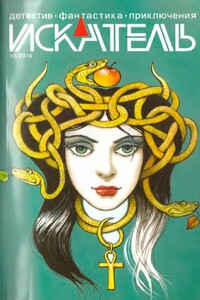
«ИСКАТЕЛЬ» — советский и российский литературный альманах. Издается с 1961 года. Публикует фантастические, приключенческие, детективные, военно-патриотические произведения, научно-популярные очерки и статьи. В 1961–1996 годах — литературное приложение к журналу «Вокруг света», с 1996 года — независимое издание.В 1961–1996 годах выходил шесть раз в год, в 1997–2002 годах — ежемесячно; с 2003 года выходит непериодически.Содержание:Олег Быстров УКРАДИ МОЮ ЖИЗНЬ (повесть);Петр Любестовский КЛЕТКА ДЛЯ НУТРИИ (повесть)
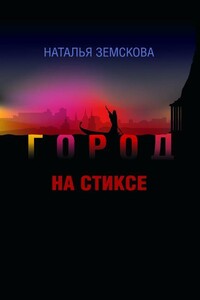
Наталья Земскова — журналист, театральный критик. В 2010 г. в издательстве «Астрель» (Санкт-Петербург) вышел её роман «Детородный возраст», который выдержал несколько переизданий. Остросюжетный роман «Город на Стиксе» — вторая книга писательницы. Молодая героиня, мечтает выйти замуж и уехать из забитого новостройками областного центра. Но вот у неё на глазах оживают тайны и легенды большого губернского города в центре России, судьбы талантливых людей, живущих рядом с нею. Роман «Город на Стиксе» — о выборе художника — провинция или столица? О том, чем рано или поздно приходится расплачиваться современному человеку, не верящему ни в Бога, ни в черта, а только в свой дар — за каждый неверный шаг.
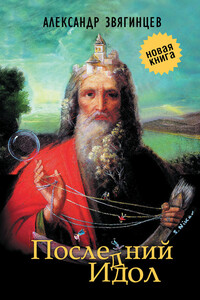
В сборник «Последний идол» вошли произведения Александра Звягинцева разных лет и разных жанров. Они объединены общей темой исторической памяти и личной ответственности человека в схватке со злом, которое порой предстает в самых неожиданных обличиях. Публикуются рассказы из циклов о делах следователей Багринцева и Северина, прокуроров Ольгина и Шип — уже известных читателям по сборнику Звягинцева «Кто-то из вас должен умереть!» (2012). Впервые увидит свет пьеса «Последний идол», а также цикл очерков писателя о событиях вокруг значительных фигур общественной и политической жизни России XIX–XX веков — от Петра Столыпина до Солженицына, от Александра Керенского до Льва Шейнина.